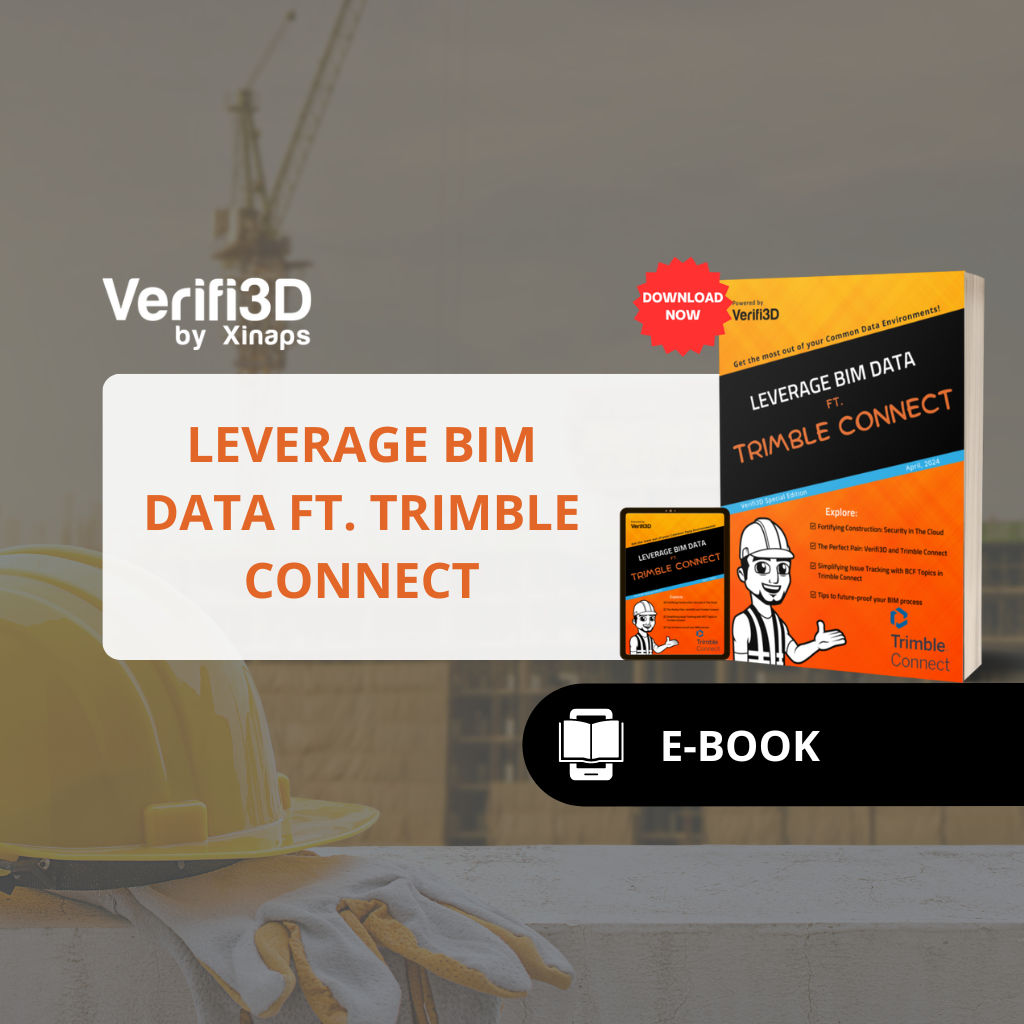
Verifi3D: Model checking & validation
With the recent redevelopment of its core display engine, broader support for CDE integrations and expanded functionality, Verifi3D offers easy-to-use model checking, validation and visualisation, writes Martyn Day.
With projects growing increasingly complex, the chances of conflicts in BIM data rise. Mature BIM tools have developed substantially over decades and are complex to learn, so individual skills can vary wildly within any company. And while most firms do have quality standards in place, checking output is typically done manually and good model checking processes are rare. Against a backdrop of constantly shifting industry standards, it’s no wonder that BIM workflows and deliverables are plagued with issues of data inconsistency.
With the industry now working towards the goal of more widespread use of digital twins, it’s never been more important that source BIM data is as error-free as possible, from a project’s initial design data to its as-built information.
Conventional tools for model checking and verification fall short of what many practitioners need today. They frequently run into problems when dealing with large datasets and diverse file formats. They require a high level of user knowledge, resulting in low productivity and error-prone outcomes. Such tools, like Navisworks, are typically standalone desktop applications, which simply aren’t designed for collaboration.
Verifi3D is a modern, cloud-based SaaS offering designed to help users overcome these issues. Developed by Xinaps, a company based in the Netherlands, it’s a rulesbased checking web solution, which supports the main design file formats (IFC, Revit and so on) and which integrates with the most popular common data environments (CDEs). These include Autodesk BIM 360, Autodesk Construction Cloud, Procore, Trimble Connect, Dropbox, Microsoft Sharepoint, Microsoft OneDrive, Google Drive and Aconex.
Since the last time that AEC Magazine looked at Verifi3D, the software architecture has undergone significant reworking. This was carried out in order to improve the system’s speed when it comes to loading, displaying and interacting with large models. New features have also been included, including big-ticket items such as clash detection.
What’s new in Verifi3D?
These new features are apparent right from the moment of log-in. Verifi3D now supports Microsoft single sign-on (as opposed to relying on Autodesk or Verifi3D credentials). Supporting Microsoft OpenID saves a lot of time that might otherwise be spent on IT security management – good news for IT admins.
The user home screen has also been tidied up, essentially guiding you through your workflow. Under the Organise menu, users access their projects, and connect to their CDE, where project files are imported. From there, the next stage is Classify, which provides the 3D viewer for graphical information and non-graphical BIM data and enables users to define elements based on their properties.
Once results come back from the Classify stage, the Validate stage carries out rule checks. There are four main checks: clash check, property check, free space check and (new for this release) duplicate check.
Report is the final stage of the process. When a clash or other issue is found, it is added to a report and gets synchronised with a supported issues tracker. Currently these are Newforma Konekt (formerly BIM Track), Autodesk BIM 360 Issues or BIMcollab.
Everything starts in the project tab. Various access rights can be allocated to project team members from Admin. Projects may be imported from the many CDEs supported or loaded from local file sources. Model Sets, meanwhile, can be built up from numerous sources, creating a federated model.
Verifi3D does not alter original files in any way. When models come in with different coordinate systems — a common issue when mixing IFC and Revit (.rvt) files — elements can be relocated.
Once that’s done, models are saved in the Verifi3D engine and optimised for cloud streaming by the Verifi3D service for display in a browser. This service effortlessly eats up multi-gigabyte models because the new proprietary model engine works mainly server-side — or in other words, in the cloud. (That’s a big change from the previous approach, in which Verifi3D relied on the Unity engine and thus on the CPUs and GPUs of the local desktop.)

One of the main enhanced features for Verifi3D is its clash detection capability
Right-clicking on any element brings up the properties section, enabling users to access all parameters within a BIM model. As Xinaps CEO Frank Schuyer claims, “We are the only developer that can merge Revit and IFC files into one federated model without losing any specific information. If you export from native Revit to IFC, you always lose specific information. We use the Forge engine (APS) for the conversion of Revit files to IFC.”
Filtering a model is based on propertybased search. Here, it’s easy to create groups of elements that can be coloured and saved for retrieval later on — for instance, all the fire doors in a federated project.
Filtered group searches don’t have to be specific to a particular Verifi3D session. They can be shared, eliminating duplicated effort. Verifi3D comes with some predefined filters, so users don’t have to create them from scratch. There is also an expanded Smart Filter function. It’s quick to find elements of a model that are under-defined so that they can get classified — such as missing category and property data, for example.

Verifi3D can be used to create COBie sheets. The developers are also looking to create further out-of-the-box COBie capabilities
Beyond the graphical elements of Verifi3D, this release offers powerful new Data View property tools for creating model filter sets. A new table view of elements can be edited to display userdefined table views of the elements in a federated model, based on categories that can be sorted, grouped and coloured to quickly achieve the desired filtered view or for isolation for export. This is useful for creating quantity take-offs, for example, and also ideal for creating COBie sheets. The Verifi3D team is working on expanding this capability to create further out-of-the-box COBie and IDS capabilities.
Verifi3D is fast becoming the Swiss Army knife for BIM data and its goal of replacing Navisworks, Solibri and some CDEs is starting to look pretty attainable
One of the main enhanced features for Verifi3D is its clash detection capability. This can perform clash detections between one or more building objects within a BIM model, helping to identify potential issues early in the design process.
Clashes can be seen in 3D and 2D. They can be hard clashes, or ones based on defined tolerances. Verifi3D also offers a flexible reporting function, which collates results from all verification tests run and the resulting reports can be exported in various formats for easy sharing and collaboration.
Verifi3D is probably the easiest to use application for designing validation checks for models, in order to quickly identify inefficiencies, discrepancies and duplications. These checks can be individual or based on a collection of rules, such as object attributes, classifications, families and parameters. Guidelines and rule sets are crafted in XML format and can be either exported from or imported into Verifi3D for sharing and reuse. Everybody can use the same rules and can be used on Revit and IFC at the same time.
One important point to note is that Verifi3D doesn’t offer built-in issue tracking. According to Schuyer, issue tracking is something that most CDE offerings already provide. In other words, it’s a commodity feature – so Verifi3D is happy to integrate with those CDEs that already offer it, enabling customers to make their own choice.
Conclusion
As a cloud application, it’s not always obvious when Verifi3D has undergone major work. By its nature, it’s constantly under development. But this time around, there have been some big architectural changes in order to overcome previous performance limitations. At the same time, the team has gone even deeper into functionality, providing more advanced ways to filter, validate and generate reports.
In this latest release, it’s clear there has been a lot of work done on the non-visual side of filtering and generating data views from federated models. This opens up new possibilities for Verifi3D in quantity takeoff, reporting and more flexible COBie delivery. Verifi3D is fast becoming the Swiss army knife for BIM data and its goal of replacing Navisworks, Solibri and some CDEs is starting to look pretty attainable. To find out more, there is a 14-day free trial.
Contributor

Director, Editor and Journalist
AEC Magazine
Note: Original article can be accessed here: https://aecmag.com/software/verifi3d-model-checking-validation/


























